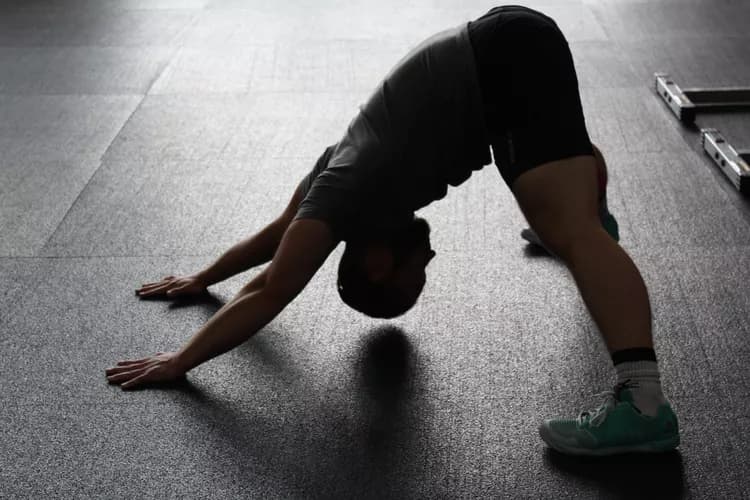Are you one of the many individuals who tend to devalue the benefits of stretching and acquiring flexibility prior to exercising? It is common to feel that adding a stretching routine to your workout is pointless, as it will not provide a stronger heart or burn extra fat. However, the flexibility acquired from stretching can help you reach your fitness goals faster.
Exercising is known to cause muscle shortening. The use of proper stretching techniques and regular stretching has the ability to offset this process. By promoting your flexibility, your muscles and joints will be able to move through their full range of motion with ease. Dynamic exercise and strength workouts require muscles that can work together smoothly through this motion. The added flexibility from regular stretching will help your muscles work together in harmony.
A study was published in 2011 by the National Strength and Conditioning Association that analyzed the effect of stretching before and after a workout. They proposed that an individual’s measured flexibility increased after stretching. There was no improvement observed in the group that did not stretch. These findings indicate that stretching is vital for flexibility, especially when completed before and after exercise.
Before exercising, it is essential to warm up the muscles you will be utilizing. When warming up the muscles with stretching exercises, it allows for less stress to be placed on them during the workout. Despite the great benefits you can acquire from routine stretching, it is equally important to maintain proper technique. When performed incorrectly, stretching can be less effective and possibly result in an injury. You should be aware of your limits while stretching and use caution when stretching the lower back and knees, as these areas are more susceptible to injury.
The Norwegian Knowledge Centre for the Health Services published a study in 2010 examining the impact stretching has on exercise-related injuries. It was found that when stretching was completed before and after exercise, there was no evident reduction in the risk for all injuries, but possibly a reduction in certain types of injuries. However, it was shown that regular stretching reduced the risk of soreness post exercise. Despite the fact that there was no concrete evidence supporting that stretching before exercise reduced the risk of all injuries, it did indicate that there was a reduction in some injuries. Thus, there is still an emphasis to incorporate stretching into one’s routine.
The University of Rochester Medical Center has outlined several guidelines for stretching before exercise. To warm up muscles prior to stretching, you can incorporate walking or light jogging into your routine for 5-10 minutes as a warm up exercise. Muscles should not be stretched when they are cold. It is important to include all muscle groups into your stretching routine. Each muscle needs to be stretched slowly and by itself. The stretch should be static, there should be no bouncing or abrupt movements made during the stretch. Breathing should be maintained during stretching, exhaling as you move further into the stretch. It is important to note that stretching should not be a painful process, as you should stop immediately if you feel any discomfort. Routine stretching before your workouts has clearly been shown to have an impact on flexibility. With your fitness goals being accomplished faster without injury, you will be on a faster track to being a healthier individual.
References:
Jamtvedt G, Herbert RD, Flottorp S, Odgaard-Jensen J, Havelsrud K, Barratt A, Mathieu E, Burls A, Oxman AD. A pragmatic randomized trial of stretching before and after physical activity to prevent injury and soreness. British Journal of Sports Medicine. 2010;44:1002-1009.
Chamerlain, K. When Exercising, Don’t Skip Stretching [Internet]. University of Rochester Medical Center [cited 2014 Nov 3]. Available from: http://www.urmc.rochester.edu/encyclopedia/content.aspx?ContentTypeID=1&ContentID=2206
Perrier ET, Pavol MJ, Hoffman MA. The Acute Effects of a Warm-Up Including Static or Dynamic Stretching on Countermovement Jump Height, Reaction Time, and Flexibility. Journal of Strength & Conditioning Research. 2011;25(7):1925-1931.
Helpful Peer-Reviewed Medical Articles:
Shehab, R., Mirabelli, M., Gorenflo, D., & Fetters, M. D. (2006). Pre-exercise stretching and sports related injuries: knowledge, attitudes and practices.Clinical Journal of Sport Medicine, 16(3), 228-231.
Simic, L., Sarabon, N., & Markovic, G. (2013). Does pre‐exercise static stretching inhibit maximal muscular performance? A meta‐analytical review.Scandinavian journal of medicine & science in sports, 23(2), 131-148.
Janot, J., Dalleck, L., & Reyment, C. (2007). Pre-exercise stretching and performance. IDEA Fitness Journal, 4(2), 44-51.
Andersen, J. C. (2005). Stretching before and after exercise: effect on muscle soreness and injury risk. Journal of Athletic Training, 40(3), 218.
Herbert, R. D., & Gabriel, M. (2002). Effects of stretching before and after exercising on muscle soreness and risk of injury: systematic review. Bmj,325(7362), 468.
Weldon, S. M., & Hill, R. H. (2003). The efficacy of stretching for prevention of exercise-related injury: a systematic review of the literature. Manual therapy, 8(3), 141-150.
McMillian, D. J., Moore, J. H., Hatler, B. S., & Taylor, D. C. (2006). Dynamic vs. static-stretching warm up: the effect on power and agility performance.The Journal of Strength & Conditioning Research, 20(3), 492-499.
Related Articles
Test Your Knowledge
Asked by users
Related Centers
Related Specialties
Related Physicians
Related Procedures
Related Resources
Join DoveHubs
and connect with fellow professionals


0 Comments
Please log in to post a comment.